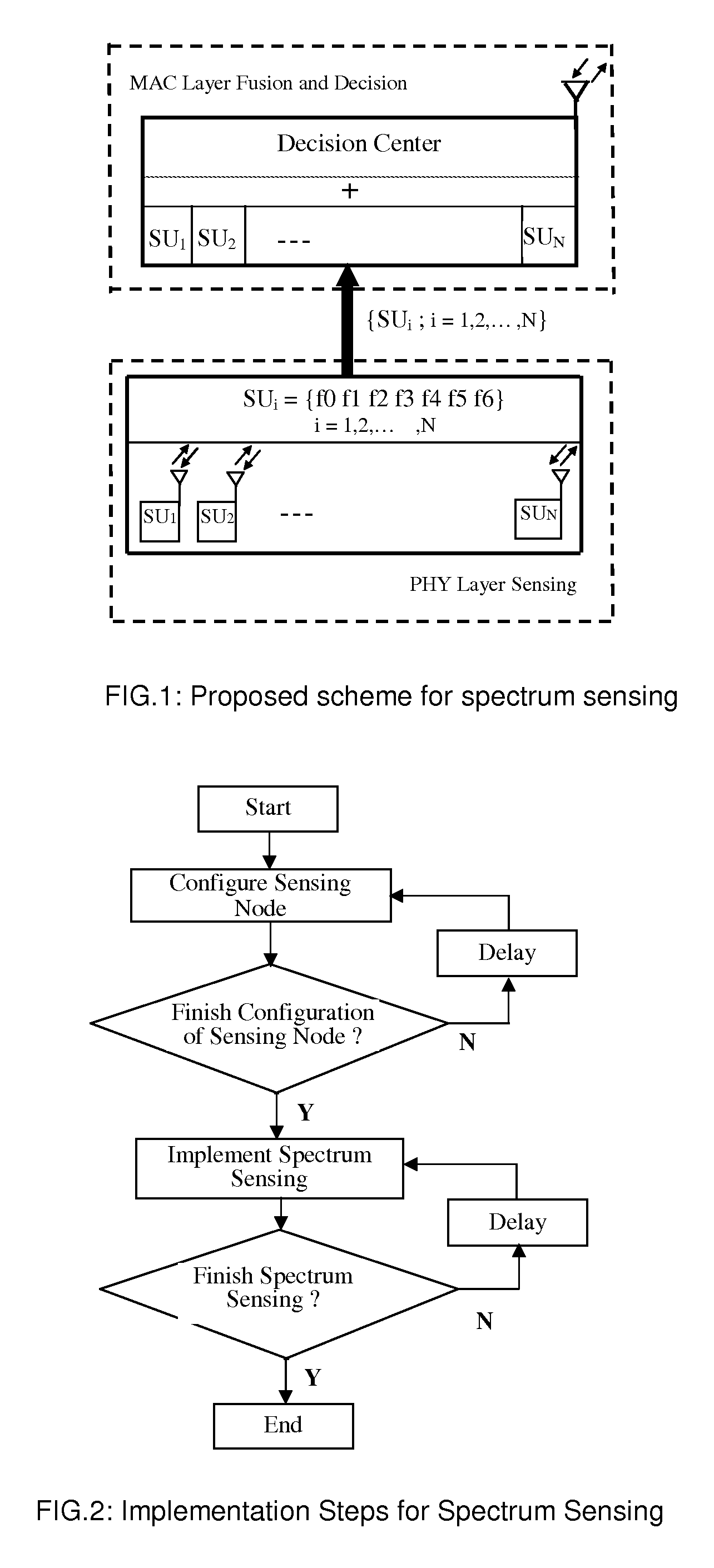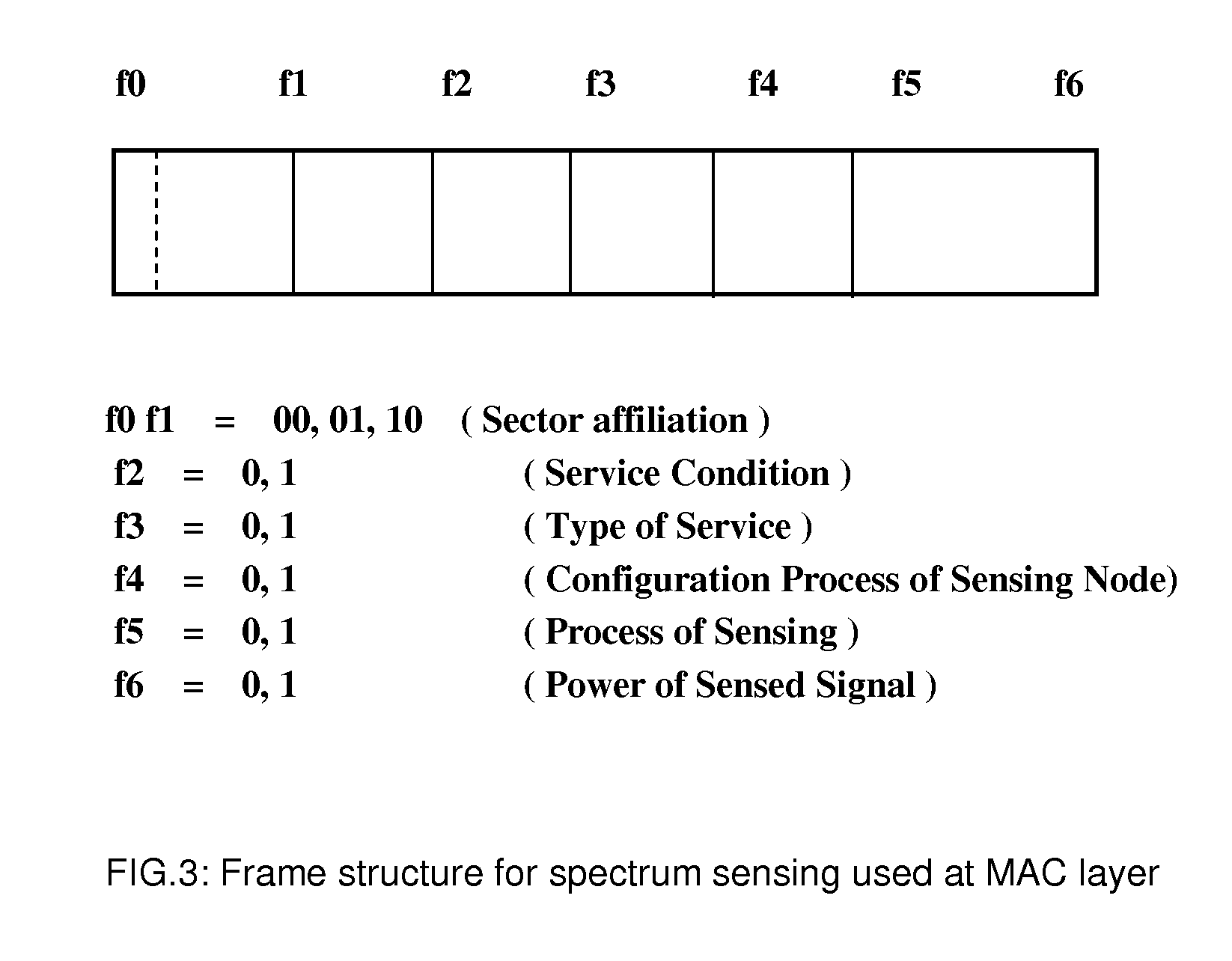Method for spectrum sensing in cognitive radio networks with open wireless architecture
a cognitive radio network and open wireless architecture technology, applied in the direction of network planning, wireless communication, electrical equipment, etc., can solve the problems of affecting the operation of existing systems, requiring a large amount of spectrum, and low spectrum utilization efficiency
- Summary
- Abstract
- Description
- Claims
- Application Information
AI Technical Summary
Benefits of technology
Problems solved by technology
Method used
Image
Examples
Embodiment Construction
[0062]The following specification for the implementation of the present invention is made based on the attached drawings.
[0063]FIG. 1 shows schematically a block diagram of spectrum sensing for secondary user system according to one embodiment of the present invention. Each sensing node completes local sensing of specified spectrum, with the sensing result transmitted to the decision center. The sensing process of each sensing node is controlled by the decision center in BS that organizes all sensing nodes within the cell to implement the synchronization process for sensing the same frequency band, as a result, increasing the probability of obtaining the correct sensing result.
[0064]The method for spectrum sensing is based on a decision and control approach that integrates the scheduling for the selection of sensing node at the MAC layer with spectrum sensing at the physical layer. The sensing result of each sensing node is collected by the fusion decision center in BS that organize...
PUM
 Login to View More
Login to View More Abstract
Description
Claims
Application Information
 Login to View More
Login to View More - R&D
- Intellectual Property
- Life Sciences
- Materials
- Tech Scout
- Unparalleled Data Quality
- Higher Quality Content
- 60% Fewer Hallucinations
Browse by: Latest US Patents, China's latest patents, Technical Efficacy Thesaurus, Application Domain, Technology Topic, Popular Technical Reports.
© 2025 PatSnap. All rights reserved.Legal|Privacy policy|Modern Slavery Act Transparency Statement|Sitemap|About US| Contact US: help@patsnap.com



